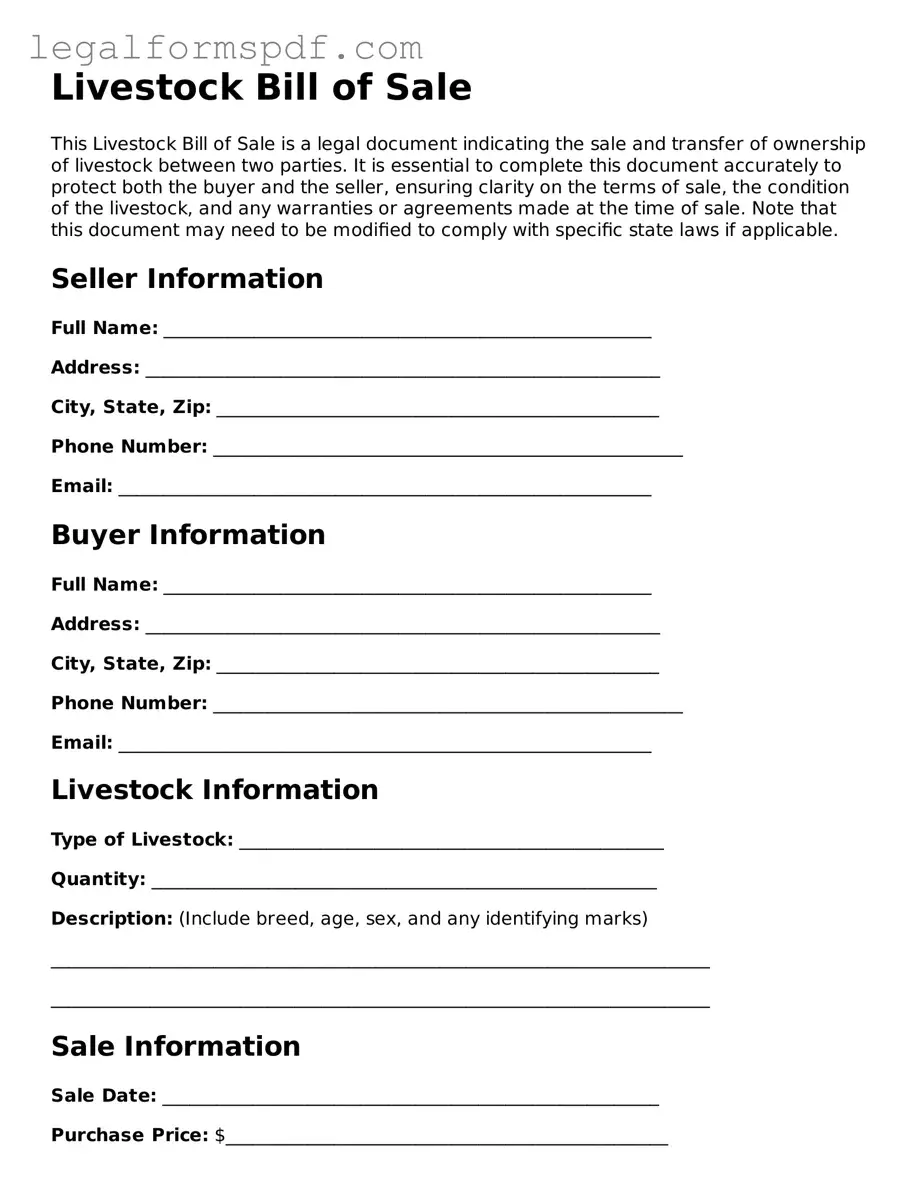Livestock Bill of Sale
This Livestock Bill of Sale is a legal document indicating the sale and transfer of ownership of livestock between two parties. It is essential to complete this document accurately to protect both the buyer and the seller, ensuring clarity on the terms of sale, the condition of the livestock, and any warranties or agreements made at the time of sale. Note that this document may need to be modified to comply with specific state laws if applicable.
Seller Information
Full Name: ______________________________________________________
Address: _________________________________________________________
City, State, Zip: _________________________________________________
Phone Number: ____________________________________________________
Email: ___________________________________________________________
Buyer Information
Full Name: ______________________________________________________
Address: _________________________________________________________
City, State, Zip: _________________________________________________
Phone Number: ____________________________________________________
Email: ___________________________________________________________
Livestock Information
Type of Livestock: _______________________________________________
Quantity: ________________________________________________________
Description: (Include breed, age, sex, and any identifying marks)
_________________________________________________________________________
_________________________________________________________________________
Sale Information
Sale Date: _______________________________________________________
Purchase Price: $_________________________________________________
Payment Method: _________________________________________________
Other Conditions of Sale: (Include any warranties, or state "As Is" if none)
_________________________________________________________________________
_________________________________________________________________________
Acknowledgment of Sale
Both parties hereby agree that the information provided in this document is accurate and that the sale of the mentioned livestock is in accordance with all relevant state laws and regulations. This document serves as a binding agreement to transfer ownership from the seller to the buyer under the terms described herein.
Signatures
Seller's Signature: ________________________________________________
Date: _____________________________________________________________
Buyer's Signature: _________________________________________________
Date: _____________________________________________________________
